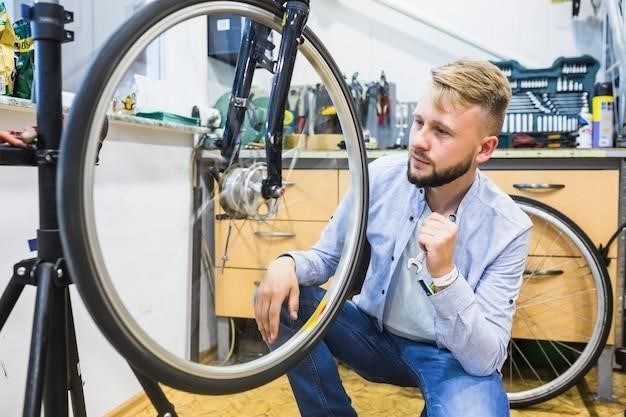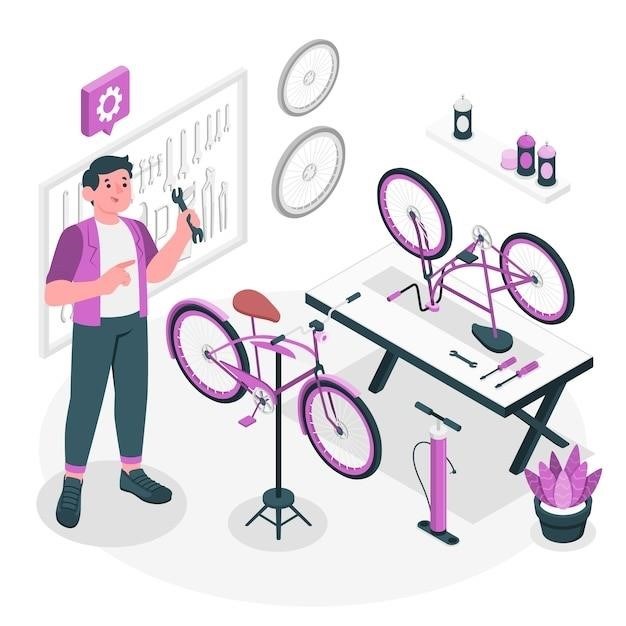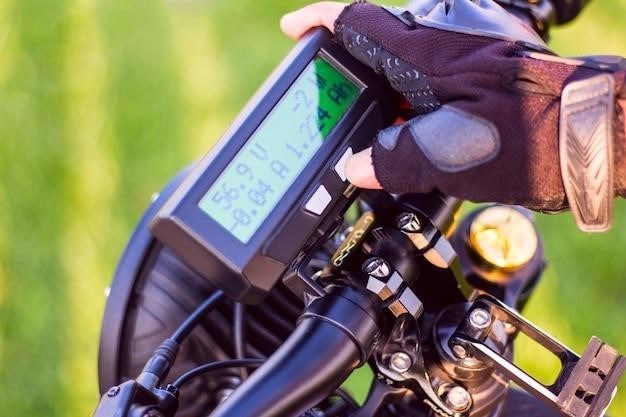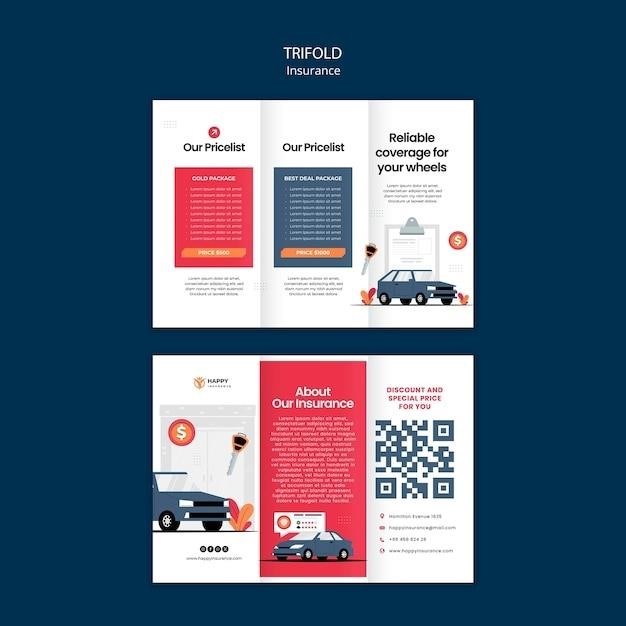
Bicycle Buying Guide⁚ Finding the Perfect Ride
This comprehensive guide will help you navigate the exciting world of bicycle buying‚ from determining your purpose to maintaining your new ride. We’ll cover everything from choosing the right type of bike and setting a budget to researching brands and understanding bike sizing. Get ready to find the perfect set of wheels for your adventures!

Determining Your Purpose
Before diving into the exciting world of bicycle options‚ take a moment to define your purpose for wanting a bike. Are you seeking a healthy way to commute to work‚ explore scenic trails‚ or simply enjoy leisurely rides around town? Perhaps you’re looking to participate in competitive cycling events or just want a fun way to get some exercise. Clearly defining your goals will help you narrow down the types of bikes that best suit your needs and preferences. Consider the terrain you’ll be riding on‚ the distance you plan to cover‚ and the frequency of your rides. Understanding your purpose will guide you toward the right bike for your journey.
Choosing the Right Type of Bike
The world of bicycles is vast and diverse‚ offering a wide array of options to suit every purpose and preference. For commuting‚ consider a hybrid bike‚ which blends the comfort of a mountain bike with the efficiency of a road bike. If you’re drawn to exploring rugged trails‚ a mountain bike with its knobby tires and suspension system is your ideal companion. Road bikes‚ known for their lightweight frames and sleek design‚ are perfect for speed and endurance on paved surfaces. If you’re seeking a comfortable ride for leisurely cruising‚ a cruiser bike with its upright seating position and wide handlebars offers a relaxing experience. Don’t forget about electric bikes‚ which provide a boost of power for hills and long distances. Take your time to explore the different types of bikes and choose the one that best aligns with your riding style and intended use.
Setting a Realistic Budget
Before you set foot in a bike shop‚ it’s crucial to establish a clear budget. Bikes range in price from a few hundred dollars to several thousand‚ so having a financial guideline will help you narrow down your choices. Consider your intended use of the bike‚ how often you plan to ride‚ and the features you prioritize. Remember‚ a higher price tag doesn’t always equate to better quality. There are excellent bikes available at various price points. If you’re on a tighter budget‚ look for used bikes in good condition or consider purchasing a bike during a sale or clearance event. Don’t forget to factor in the cost of essential accessories like a helmet‚ lights‚ and a lock‚ which can add to your overall expenditure. Setting a realistic budget will ensure you find a bike that fits your financial constraints and allows you to enjoy your cycling experience without breaking the bank.
Researching Bike Brands
Once you have a general idea of the type of bike you want and a budget in mind‚ it’s time to start researching bike brands. The bicycle industry is filled with renowned manufacturers‚ each with its strengths and specializations. Don’t be afraid to delve into the world of reviews and forums to gather insights on different brands. Look for information on their reputation for quality‚ durability‚ innovation‚ and customer service. Consider factors like warranty policies‚ availability of spare parts‚ and the brand’s commitment to sustainability. Remember‚ some brands cater to specific types of riders‚ such as road cyclists‚ mountain bikers‚ or commuters. Researching bike brands allows you to make an informed decision based on your individual needs and preferences. It’s also an opportunity to discover hidden gems or emerging brands that might offer exceptional value for your investment.
Understanding Bike Sizing
Bike sizing is crucial for a comfortable and efficient ride. It’s not just about your height‚ but also factors like leg length‚ torso length‚ and arm reach. A bike that’s too big will feel cumbersome and difficult to control‚ while a bike that’s too small can strain your back and knees. Most bike shops offer professional bike fitting services that measure your dimensions and recommend the right size. However‚ you can also use online sizing guides and charts as a starting point. Pay attention to measurements like standover height (the distance between the top tube and the ground when you stand over the bike) and reach (the distance between the saddle and the handlebars). When test riding a bike‚ pay close attention to how it feels. Can you comfortably reach the handlebars? Is the saddle at the right height? If you experience any discomfort or strain‚ it’s a sign that the bike may not be the right size for you. Remember‚ finding the perfect fit is essential for enjoying your cycling adventures.
Essential Bike Components
While the frame is the foundation of any bike‚ its the essential components that truly determine performance and riding experience. Understanding these components will help you make informed decisions when choosing a bike. The drivetrain‚ consisting of the crankset‚ chainrings‚ derailleur‚ cassette‚ and chain‚ dictates your shifting gears and power transmission. A quality drivetrain ensures smooth and efficient shifting‚ crucial for both casual rides and challenging climbs. The brakes‚ whether rim brakes or disc brakes‚ are vital for safe and controlled stopping. Disc brakes offer superior stopping power‚ especially in wet conditions. The wheels‚ including the hubs‚ spokes‚ and rims‚ influence rolling resistance and overall efficiency. Consider the type of terrain you’ll be riding on when choosing wheels‚ with wider tires offering more stability and comfort on rough surfaces. Lastly‚ the handlebars and stem determine your riding position and control. Choose a setup that feels comfortable and allows for easy maneuvering. Researching and understanding these components will empower you to choose a bike that meets your needs and enhances your cycling experience.
Test Riding Your Potential Bike
After careful consideration of your needs and researching potential bikes‚ the next crucial step is test riding. This allows you to experience the bike firsthand‚ assessing its fit‚ handling‚ and overall feel. Don’t be shy; ask the bike shop staff for assistance in adjusting the seat height and handlebars to ensure a comfortable riding position. Take the bike for a spin on various surfaces‚ simulating the terrain you’ll encounter in your regular rides. Pay attention to how the bike handles‚ how easily you can shift gears‚ and how the brakes perform. Consider the weight of the bike‚ especially if you’ll be carrying it up stairs or loading it onto a car rack. Test riding allows you to gain a deeper understanding of the bike’s capabilities and ensure it aligns with your riding style and preferences. This hands-on experience is invaluable in making a confident decision and selecting the bike that will provide you with countless enjoyable rides.
Choosing the Right Accessories
Once you’ve found the perfect bike‚ it’s time to consider the accessories that will enhance your riding experience and ensure your safety. A helmet is an absolute must‚ providing crucial head protection in case of a fall. Choose a helmet that fits snugly and comfortably‚ meeting safety standards. Consider adding lights‚ especially if you’ll be riding at dusk or in low-light conditions. A good set of lights will increase your visibility to other road users‚ making your rides safer. If you’ll be carrying belongings‚ a bike rack or panniers will provide convenient storage. For longer rides‚ a water bottle holder and a saddle bag for carrying essential tools are valuable additions. Don’t forget about comfortable cycling gloves to protect your hands and improve grip. Remember‚ the right accessories can make all the difference in your enjoyment and safety on the road. Invest wisely‚ and you’ll be well-equipped to tackle any cycling adventure!
Where to Buy Your Bike
You have several options when it comes to buying your new bike. Local bike shops offer a personalized experience‚ with knowledgeable staff who can provide expert advice and recommendations. They can help you find the right bike for your needs‚ adjust it for a perfect fit‚ and offer ongoing maintenance and repairs. Online retailers offer a wide selection of bikes at competitive prices‚ often with convenient delivery options. However‚ you’ll miss out on the personalized service of a local shop. Department stores may offer a limited selection of bikes at lower prices‚ but their expertise and service might be lacking. Consider your budget‚ preferences‚ and the level of service you desire when deciding where to buy your bike. Remember‚ a reputable retailer will provide you with a warranty and post-sale support‚ ensuring a smooth and enjoyable experience.
Maintaining Your New Bike
Keeping your bike in top condition will ensure a smooth‚ enjoyable ride and extend its lifespan. Regular maintenance is crucial‚ and it doesn’t have to be complicated. Start by cleaning your bike after each ride‚ removing dirt and grime that can accumulate and cause wear and tear. Check your tire pressure regularly and inflate them to the recommended PSI for optimal performance and safety. Lubricate your chain regularly‚ keeping it clean and moving smoothly. Inspect your brakes for proper function‚ ensuring they’re adjusted correctly and the pads are not worn out. Finally‚ take your bike to a local shop for a professional tune-up every six months or so‚ allowing a mechanic to identify any potential issues and perform necessary adjustments. By following these simple steps‚ you can enjoy your bike for years to come‚ making it a reliable companion for all your cycling adventures.




